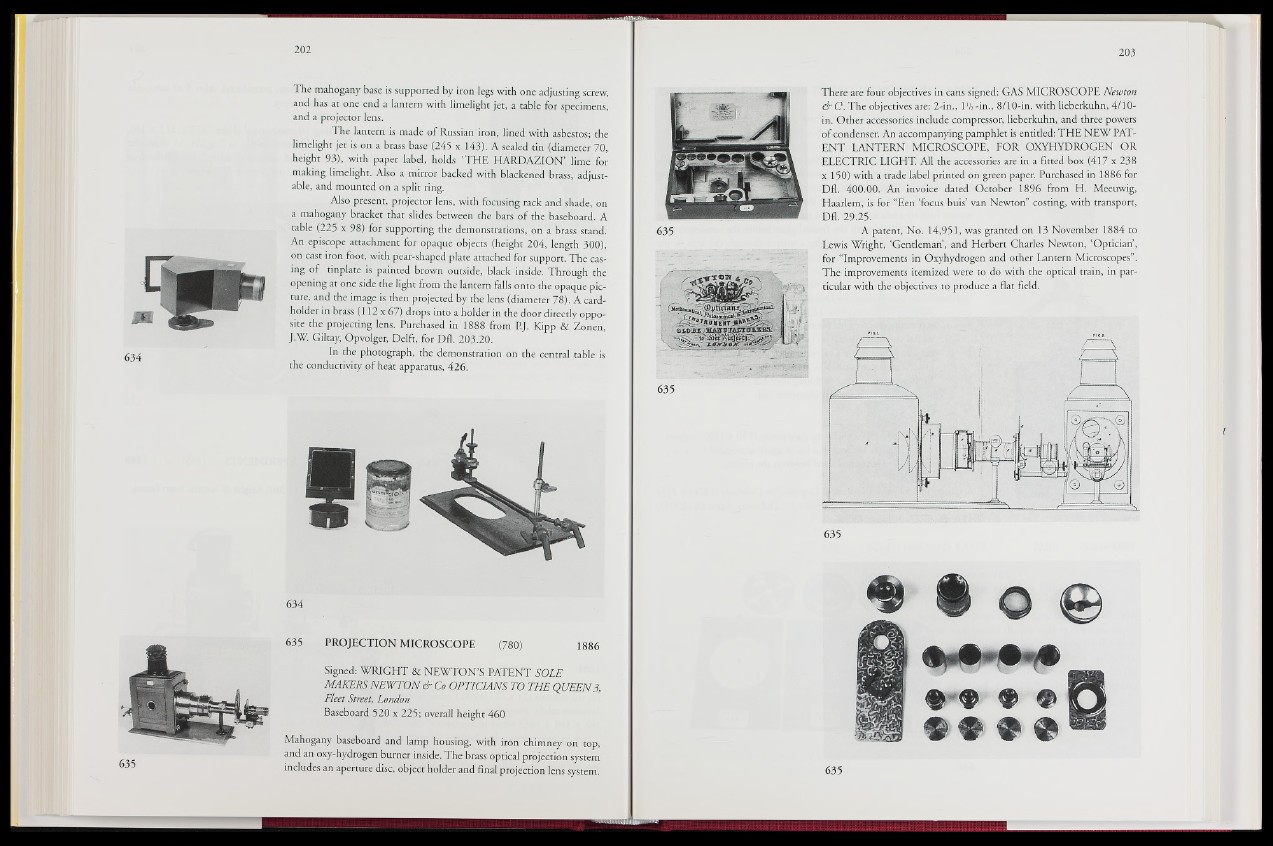
The mahogany base is supported by iron legs with one adjusting screw,
and has at one end a lantern with limelight jet, a table for specimens,
and a projector lens.
The lantern is made of Russian iron, lined with asbestos; the
limelight jet is on a brass base (245 x 143). A sealed tin (diameter 70,
height 93), with paper label, holds 'THE HARDAZION’ lime for
making limelight. Also a mirror backed with blackened brass, adjustable,
and mounted on a split ring.
Also present, projector lens, with focusing rack and shade, on
a mahogany bracket that slides between the bars of the baseboard. A
table (225 x 98) for supporting the demonstrations, on a brass stand.
An episcope attachment for opaque objects (height 204, length 300),
on cast iron foot, with pear-shaped plate attached for support. The casing
of tinplate is painted brown outside, black inside. Through the
opening at one side the light from the lantern falls onto the opaque picture,
and the image is then projected by the lens (diameter 7 0 A cardholder
in brass (112 x 67) drops into a holder in the door directly opposite
the projecting lens. Purchased in 1888 from Pj. Kipp & Zonen,
J.W. Giltay, Opvolger, Delft, for Dfl. 203.20.
In the photograph, the demonstration on the central table is
the conductivity of heat apparatus, 426.
634
635 PROJECTION MICROSCOPE (780) 1886
Signed: WRIGHT & NEWTON’S PATENT SOLE
MAKERS NEWTON & Co OPTICIANS TO THE QUEEN3,
Fleet Street, London
Baseboard 520 x 225; overall height 460
Mahogany baseboard and lamp housing, with iron chimney on top,
and an oxy-hydrogen burner inside. The brass optical projection system
includes an aperture disc, object holder and final projection lens system.
There are four objectives in cans signed: GAS MICROSCOPE Newton
& C. The objectives are: 2-in., lV2-in., 8/10-in. with lieberkuhn, 4/10-
in. Other accessories include compressor, lieberkuhn, and three powers
of condenser. An accompanying pamphlet is entitled: THE NEW PATENT
LANTERN MICROSCOPE, FOR OXYHYDROGEN OR
ELECTRIC LIGHT. All the accessories are in a fitted box (417 x 238
x 150) with a trade label printed on green paper. Purchased in 1886 for
Dfl. 400.00. An invoice dated October 1896 from H. Meeuwig,
Haarlem, is for “Een ‘focus buis’ van Newton” costing, with transport,
Dfl. 29.25.
A patent, No. 14,951, was granted on 13 November 1884 to
Lewis Wright, ‘Gentleman, and Herbert Charles Newton, ‘Optician,
for “Improvements in Oxyhydrogen and other Lantern Microscopes”.
The improvements itemized were to do with the optical train, in particular
with the objectives to produce a flat field.